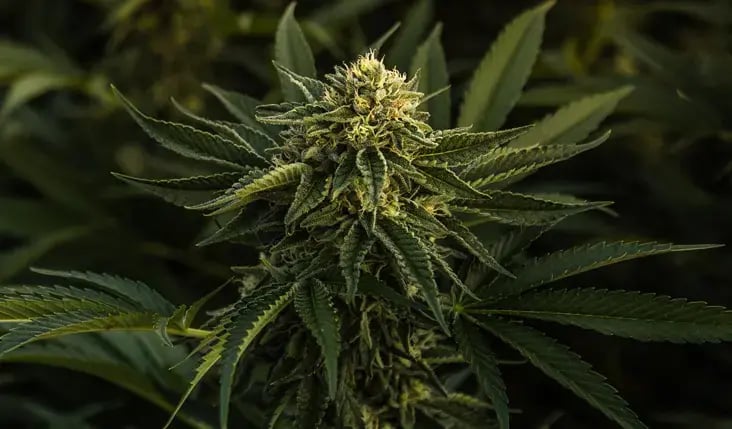Don't let dry, dusty buds ruin your buzz. Revive that sad stash with precise hydration, and enjoy a smoother, more flavorful smoke.

If you’ve ever suffered from a bout of “cotton mouth” (i.e., dry mouth), you know firsthand the importance of hydration. Every living thing on the planet—from desert cacti to single-celled bacteria, large mammals, and underground dwellers—needs water to survive and thrive. We’re no different. And neither is your bud.
When a grower plucks, harvests, and packages flower for distribution, it kicks off an unstoppable countdown clock. Every minute flower spends in transport on its intrepid journey to your stash, it loses moisture. If you catch it hot off its exit from the supply chain, you might buy a product that’s perfectly fresh and bright. Then, all you need to do to enjoy it is maintain that freshness.
But more often than not, we receive slightly (sometimes severely) dry product. It doesn’t help that flower is often subjected to less-than-ideal environments, like the bottom of a backpack or the back of a drafty cupboard. Keeping flower sticky is more than an aesthetic concern; it creates an overall more enjoyable experience.
In this article, we’ll talk about why flower hydration matters, how to store flower properly, and how to rehydrate flower after it has gone dry and stale.
Why Flower Hydration Matters
Before we get into how to rehydrate flower, let’s discuss why.
The difference between sticky, fluffy buds and dried-out dust boils down to hydration. If you pinch a bud between your fingers and it easily crumbles to bits, your flower has dried out. But hydration is about more than chasing that ideal dense, resinous bud. Hydration also impacts flavor, aroma, burn time, terpene efficacy, and overall potency.
The flavor of flower is inextricably tied to terpenes, those naturally occurring compounds in the essential oils of plants. When sufficiently hydrated (as in nature), these terpenes are bright and evocative—piney, woodsy, peppery, fruity, or floral, depending on the specific terpene. But as hydration dips, so does terpene complexity (consider the difference between fresh and dried rosemary). In simpler terms: the drier the flower, the duller the effects.
According to scientific studies, terpenes have benefits beyond aroma and taste; they are also responsible for the analgesic (pain-reducing), anxiety-mitigating, anti-inflammatory, and antioxidant effects of flower. Therefore, overly dry flower may have fewer health and wellness benefits than its fresher counterparts.
Improperly storing flower impacts the cannabinoids (the chemicals responsible for the flower’s drug-like effects). Properly stored flower will only lose 16% of its THC potency after a year. Improper storage speeds up and exacerbates this terp-losing process.
Lastly, let’s be honest: dry flower makes for a lousy smoking experience. It burns fast and hot, harsh and muted. A far cry from how fresh flower burns: slow, sultry, and robust. If you want to learn more about how flower humidity affects the processes of drying, storing, and curing flower, check out the resources linked in this sentence.

The Best Offense Is Good Defense: Storing Your Flower Properly
Before we delve into how to rehydrate dry flower – the offensive strategy – let’s talk about your defensive strategy. Ideally, you store your flower properly the moment you bring it home from the dispensary and never get to the point where your bud needs resuscitation.
Traditionally, consumers attempt to avoid staleness with unreliable remedies like lettuce leaves, soaked sponges, or citrus peels stored with their flower. Unfortunately, these methods are woefully imprecise, often failing to cultivate that sweet-spot microclimate between 55% and 65% RH. They’re also detrimental to flower stored in ambient humidity over 65%, which can result in moldy flower.
How to Rehydrate Flower
Life happens, and so does dry flower. Despite your best efforts, you might leave the lid off your jar, or forget that baggie at the bottom of a backpack for a month. You might even receive overly dry product from a dispensary.
Is this a problem? Sure. Can you do something about it? Yes! Learning how to rehydrate flower will set you back on the right path.
There are three primary mechanisms involved in rehydrating flower: a tight seal, moisture, and time. To kickstart the first mechanism, grab any airtight container, like a Mason jar, sturdy zip-top bag or a durable, easy-sealing CVault.
Now that you have the ecosystem, you need to create the microclimate—as mentioned above, somewhere between 55% and 65% relative humidity. This is the sweet spot for bud, with the lower end netting a more pliable product, and the higher end yielding stickier buds. Boveda's industry-beloved flower humidifier pack is the precise way to hit that microclimate.
It’s as simple as bud + Boveda. But all good things take patience. Whereas fresh buds stay fresh in an airtight container with a humidity control pack, dry flower takes a while to reach its equilibrium. It needs time to leech the moisture it requires from the humidity pack. Ideally, you should wait between 24 and 48 hours, but the longer the better. Because Boveda provides 2-way humidity control (i.e., it gives and takes moisture), you never run the risk of overhydration. Your flower will hit the ideal RH, and then coast there until you’re ready to enjoy.
Hydration is as vital to your flower as it is to every living thing. Learn how to hydrate flower (or how to rehydrate flower), and you’ll never suffer through dry, harsh bud again.
